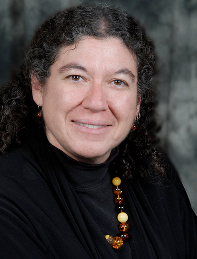Big Babies
By Peter LloydTo tease my little brother, I’d wait for him to fail and then call him a big baby. Cruel, I know. Glad I got that off my chest. I can chalk it up to a big brother’s need to keep the younger sibling in his place, but that doesn’t excuse it. Sorry, brother. My intention, however, is not to use you as my confessional sounding board. It’s to illustrate the creative power of reversal.
The difference between adults and babies is entirely reversible. While it insults a young boy to be called a baby by his sometimes hero and role model older brother, a little sister, girlfriend, marriage partner, and intimate friends all take to the title. I think the fact that we refer to a loved one as baby is freighted with meaning. All the wonderful things about a baby endear us to a loved one. “Baby, I need your lovin’!”
Author Marco Marsan encourages people to put their inner child in charge of their creative enterprises in Think Naked, because as a child, your childlike thinking made you as naturally creative as you would ever be. So instead of problem solving judiciously, intelligently, and responsibly like an adult, Marsan advises the reverse—thinking and experimenting impulsively, naively, and recklessly—in order to solve problems.
Creative Reversal
Why would anyone look at an adult and think of it as a big child? How could that kind of reversal offer any creative value? Let me tell you a story, as if you were a child.
 Once upon a time, all the pediatricians of the land decided not to treat children as if they were small adults—big people in small bodies, full of human potential but with limited experience. One pediatrician, Dr. Dr. Perri Klass, well trained like her fellow pediatricians in this approach, used tiny needles to draw blood from babies.
Once upon a time, all the pediatricians of the land decided not to treat children as if they were small adults—big people in small bodies, full of human potential but with limited experience. One pediatrician, Dr. Dr. Perri Klass, well trained like her fellow pediatricians in this approach, used tiny needles to draw blood from babies.Then one day she reversed her thinking. “If you can get enough blood through a small needle filling a small tube to do the necessary tests,” she thought, “why must we jab big needles into adults and fill comparatively huge tubes to do the same assessments?”
Going a step further, the good pediatrician wrote an article, Things Adult Medicine Could Learn From Pediatrics, in her New York Times blog.
But when it comes to certain aspects of medical treatment, especially hospitalization, perhaps it’s time to acknowledge that adults are really just big children. Illness, pain and the shadows of disability and death—all hospital familiars—make all of us vulnerable, at any age, and reassurance and comfort are welcome. Blood is a useful reminder: Every patient needs to be treated in a way that conserves every drop of strength and resilience.Dr. Klass’s voice has been heard and hospitals have begun taking to heart her idea about treating adults more like big babies. Ain’t it about time? After all, when you’re sick, hurt, afraid, it’s good to be treated like a baby. Deep in our most vulnerable underbellies, we are big babies. Thank you, Dr. Klass, for thinking of us that way.
See also:
- Every Mother is a Daughter: the Neverending Quest for Success, Inner Peace, and a Really Clean Kitchen by Perri Klass
Peter Lloyd is co-creator with Stephen Grossman of Animal Crackers, the breakthrough problem-solving tool designed to crack your toughest problems.
Right Brain Workouts Explained
